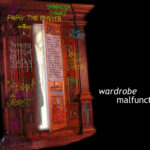What To Pack For ‘The Voyage Of The Dawn Treader,’ Part 1
About a month ago I wrote a two-part column about what contributed to the failure of the second Chronicles of Narnia film, Prince Caspian, to live up to the success of its predecessor.
In the first installment, I listed as two reasons marketing difficulties and differences between Disney and the C.S. Lewis estate that likely led to the two separating. And in the sequel column, I speculated that adaptation issues and changes to the Caspian book’s messages of faith and redemption did some damage to the story itself — though overall the film was well done.
Now, similar to the third pending Narnia film, The Voyage of the Dawn Treader, I have had some delays releasing my own third installment in this series. Last time, I promised to offer some suggestions and a started discussion about what Fox / Walden (new distributor, and same producers) needs to bring for this Voyage. I’ve broken this down into eight suggestions, four to follow in this column, with the next four in yet another sequel. Here we go …
1. Better Aslan focus.
Many complained mightily about Aslan lacking might in the Prince Caspian film, and to some extent even that was an improvement over the ways he was presented in 2005’s LWW.
Yet those are style criticisms. I think any portrayal of the Lion — similar to showing the true-life Savior Whom he parallels — is bound to meet with protests that the paradox of not-tame-yet-good wasn’t presented well enough. (The puppet Aslan of the BBC made-for-TV Narnia movies barely moved, and sounded tranquilized. Yet in Focus on the Family’s supreme Radio Theatre Chronicles, Aslan, at least at first, “RAWWWLLLL”ed about so much that it sounded silly.)
Aslan could be improved visually in Voyage. But in terms of story, he needs to be even bigger. Though in the book he only makes “cameo” appearances, there is a constant sensation that the Lion who created and sustains Narnia is always there, guiding the ship and its crew, even if you cannot see him. This sense of Providence must be preserved. It will make Voyage even deeper.
2. No added mega-battles.
Battles are awesome. I like big battles, mostly if they are in context of a broader story and contain characters I’ve grown to care about. And the LWW and PC films’ souping battles up into huge sequences, with charging centaurs and exploding boulders were not much amiss, because Lewis’s books did contain battles, though often they weren’t described all that much.
However, Voyage is a different kind of story. Whenever someone draws a sword it’s more for a skirmish — I recall from the book some tangling with slave traders, and the scary fight against a sea serpent. Most of the tension comes from the battles that might happen, not the ones that actually do — like dark dreams, the Dufflepuds or the enchanted Ramandu’s Island. Voyage is a high-seas adventure tale. It doesn’t need a Huge Climactic Battle Sequence. To decide otherwise would be not only to opt for cheap CGI tricks, but deny the story’s true appeal.
Yet I will go on the record regarding the sea serpent with two predictions: that fight will be extended, and I also believe the story will be adjusted just a little to allow Eustace to fight the beast further — perhaps even while he is still in dragon form. I’ll also dare to say I wouldn’t mind such changes; and if I were in charge of script adaptation, I might even push for them.
3. Make Eustace memorable.
Though Lucy and Edmund from the first two Chronicles return in Voyage, its real human star is Eustace Clarence “And he almost deserved it” Scrubb. Even more than Edmund’s redemption in LWW, Eustace undergoes such an amazing parallel to the Biblical teaching of human sin and salvation that he remains one of my all-time favorite child characters in the Chronicles.
Those who want or wanted to make the children in the films more “human” and with Deeper Characterizations than what are (supposedly) more shallow figures from the first two novels could not be given a better opportunity with Eustace.
Yet Voyage screenwriters don’t need to deepen or “flesh out” Eustace. C.S. Lewis has already done so. I hope they will resist the temptation to change Eustace in other ways, either after or especially before his transformation. Don’t make him beastly-acting just because his Parents Neglected Him, or because he is Shocked By His Unfamiliar Environment or because Someone Really Was Mean to Him or anything like that. Instead, Eustace should be beastly because that is his nature. Otherwise the redemption won’t work, the story won’t work, and he will fail to be memorable and become the shallow character the writers should surely hope to avoid.
4. Enhance musical themes.
As I enjoy the films themselves, I also appreciate their music by Harry Greggson-Williams. But they could certainly be better. Along with new director Michael Apted (Amazing Grace) replacing Andrew “Shrek” Adamson, a new composer (David Arnold) is on board for this Voyage. I’m unfamiliar with the rest of his film work, yet his score for Amazing Grace was personal, melodic and appropriately evocative of the film’s mix of history and personal faith journey.
Voyage needs two kinds of themes in its soundtrack. Improving on the first two scores, it needs themes of loyalty, bravery, adventure, and especially redemption. Yet it also needs themes as in musical themes — Aslan needs a more-awesome theme, Eustace/redemption needs a theme, and surely the composer will set Reepicheep’s destiny-in-the-East-style lullaby to music as well? If not, then they could at least repeat the sacred-sounding manner or even the tune that the BBC Voyage movie, for all its flaws, did so well for the lullaby’s reprise.










































[…] week: an overview of my original hopes and expectations for the film, listed in part 1 and part 2 of my column last year, and whether the current film may meet […]
[…] indicated won’t be so canonical. Last year I made several suggestions/predictions about the film on Spec-Faith. How did I do? 1. Better Aslan […]